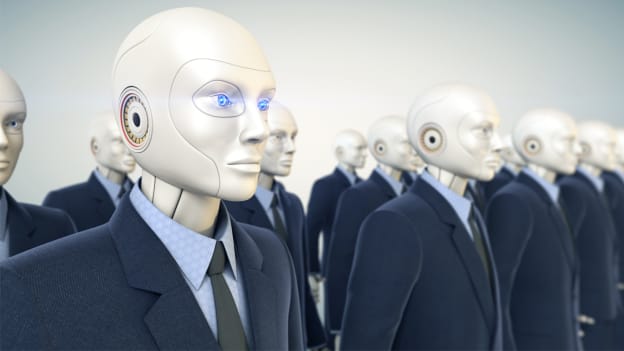Starting the journey - The AI revolution and the leadership challenge

Machines replacing humans! It has happened before, and it will keep happening — from Gutenberg’s printing press in the 15th century which impacted the jobs of scribes and copiers, to mechanized agriculture in the 19th century, which reduced the need for manual farm labor. In more recent times, Automatic Teller Machines (ATMs) affecting banking jobs, and digital money and cashless transactions reducing the need for ATMs — are just a few examples of changes that have provided great opportunities for businesses and led to improvements in productivity, efficiency, speed, and cost savings. They were necessary for mankind to make progress and also created new jobs. From jobs related to running printing presses, factory jobs due to industrialization, to jobs related to Internet banking, many new jobs came up. It’s the same old story of change. Of new taking over the old – a universal truth. Whenever such changes occur, leaders have a huge responsibility to understand the changes, leverage the opportunities offered by them, and lessen the pain of the transition to tech. In the case of Artificial Intelligence (AI) too, it will be the same rigmarole. It will create new revenue streams, for e.g., drone manufacturing or neural network applications in customer preferences, and will lead to job creation in AI and its related disciplines. Of course, some jobs will also get automated. But how can leaders make this transition more appealing to the organizations? What habits that can help leaders get started? Here are three capabilities which leaders need to enhance within themselves to ensure a smoother transition to an AI-enabled business.
Developing Curiosity & Awareness
A leader needs to be sharp and curious, always scanning the environment for changes impacting the business. Like a sponge, a leader has to constantly absorb knowledge and learn from varied sources. A well-developed curiosity enables a leader to seek out knowledge and form connections between existing practices and new insights while focusing on understanding the implications of the changes and new ways of working on his functional area or business. Leaders in every function and business need to be aware of the developments in AI overall, and specifically in their functional or business area. Irrespective of the sectors, it is imperative for leaders to be aware of the market disrupting potential of AI in all spheres of business, think through the opportunities created by data insights, and formulate optimal strategies and decisions with AI-based predictive analytics. To gain an understanding of AI and its implications, immersive learning experiences in AI are essential as they are capable of triggering conversations on the applications of AI in the business. A leader who cultivates a strong awareness of the ways in which AI impacts his business or function is already a few steps ahead in coping with change, compared to another leader whose antennae are not sharply tuned.
Leaders need to take a deep look at their organizations and understand how AI will impact them, and then work in a disciplined way to get the benefits of AI while reducing the adverse impact on people.
Disciplined Adoption & Abandonment
AI may prompt the adoption of new practices and abandoning the old practices, however, both involve change, which human beings are usually resistant to because they like to hold on to the familiar and established ways of doing things. However, the first step is to identify the processes, practices or ways of working that need change. One needs to avoid the temptation of a herd mentality and hop onto the AI bandwagon simply because everyone is doing so. This requires a detailed and thoughtful understanding of how adopting a new practice or abandoning and old one will impact the organization. It is important to create a business case for the proposed change outlining the clear benefits along with potential risks. A systems thinking approach – understanding the interrelationships between all the moving parts is critical when making changes. It is also important to have a logical chain of thinking, which progressively frames questions around the multiple ripple effects of each action, and seeks answers to them for example, if practice A is adopted or abandoned, how it will impact practice B, outcome C and department D. The answers to these then may fuel more questions, leading to greater clarity into the implications of an action. This is called “disciplined” adoption or abandoning that is carried out only after a very robust and thorough thought process versus one which is frenzied and haphazard.
Leaders have a huge responsibility to first understand the changes and leverage the opportunities offered by them
Compassionate Foresight & the People element
The “people element” is the most complicated component that needs to be addressed when adopting new tech. Leaders have to grapple with questions related to the skills that will not be needed anymore, the business unit or department that could be made redundant going forward, or if people will be made redundant. To manage and answer such questions, leaders require compassionate foresight which means the ability to foresee or prepare for the future and simultaneously having a deep awareness of the suffering of people being affected by change. A leader should be aware of the possible changes, which may be far in the distance now, but could impact people when they actually take place. This foresight enables a leader to evaluate the possible consequences of the impending change, change the course, or come up with creative solutions before the change actually happens.










